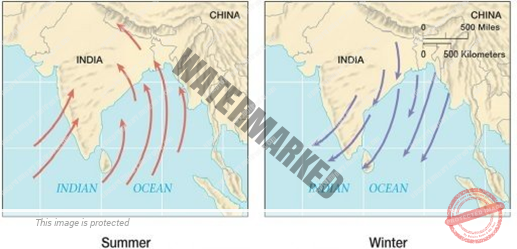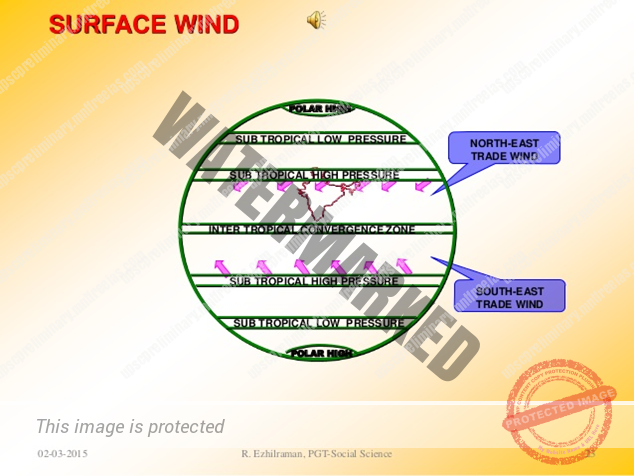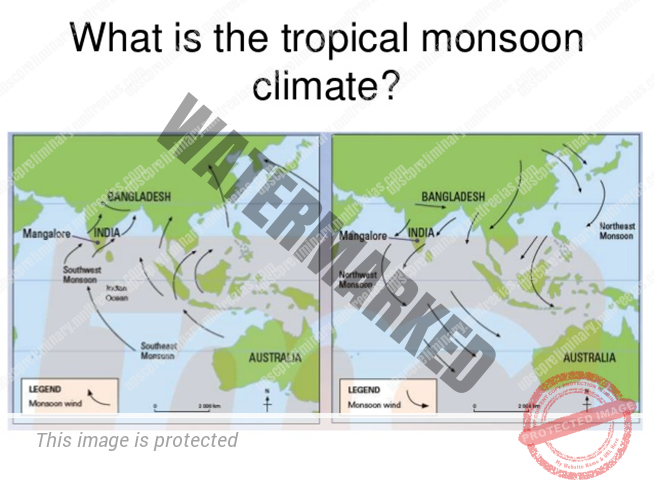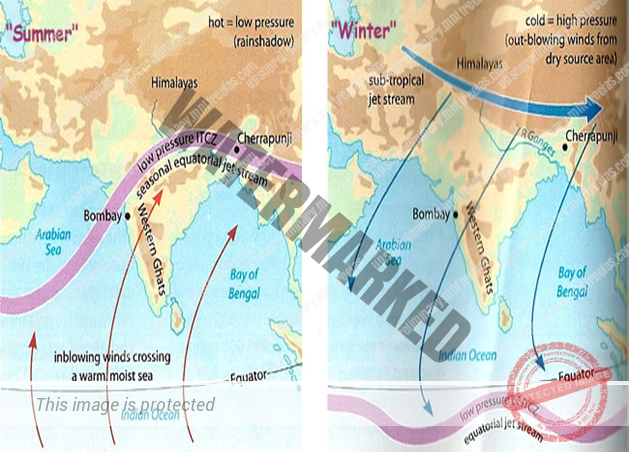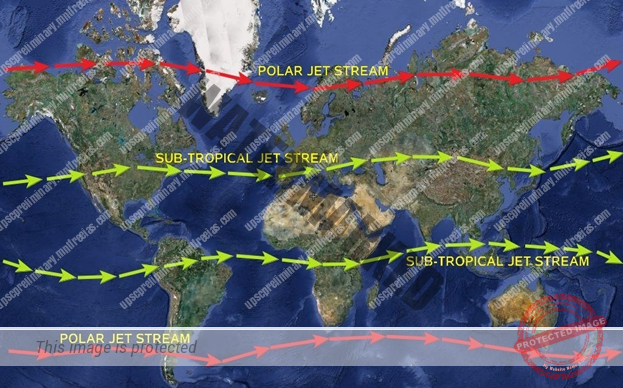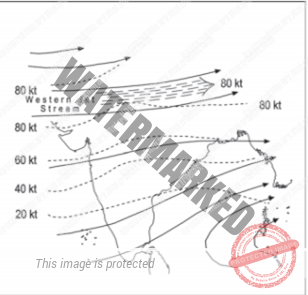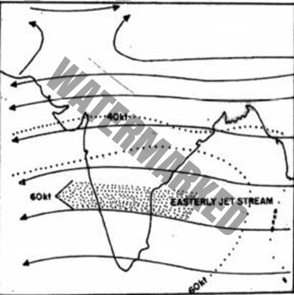- PRESSURE AND WINDS
- WHAT IS THE TROPICAL MONSOON CLIMATE
UNIT 4 – CLIMATOLOGY – PART 13
PRESSURE AND WINDS
The climate and associated weather conditions in India are governed by the following atmospheric conditions:
- PRESSURE AND SURFACE WINDS.
- UPPER AIR CIRCULATION.
- WESTERN CYCLONIC DISTURBANCES AND TROPICAL CYCLONES.
India lies in the region of north easterly winds. These winds originate from the subtropical high-pressure belt of the northern hemisphere. They blow south, get deflected to the right due to the Coriolis force, and move on towards the equatorial low-pressure area. Generally, these winds carry very little moisture as they originate and blow over land. Therefore, they bring little or no rain.
THE PRESSURE AND WIND CONDITIONS OVER INDIA ARE UNIQUE.
During winter, there is a high-pressure area north of the Himalayas. Cold dry winds blow from this region to the low-pressure areas over the oceans to the south.
In summer, a low-pressure area develops over interior Asia as well as over northwestern India. This causes a complete reversal of the direction of winds during summer. Air moves from the high-pressure area over the southern Indian Ocean, in a south-easterly direction, crosses the equator, and turns right towards the low-pressure areas over the Indian subcontinent. These are known as the SOUTHWEST MONSOON WINDS.
These winds blow over the warm oceans, gather moisture and bring widespread rainfall over the mainland of India. The upper air circulation in this region is dominated by a westerly flow. An important component of this flow is the JET STREAM. These jet streams are located approximately over 27°-30° north latitude, therefore, they are known as SUBTROPICAL WESTERLY JET STREAMS.
Over India, these jet streams blow south of the Himalayas, all through the year except in summer.
The western cyclonic disturbances experienced in the north and north-western parts of the country are brought in by this westerly flow.
In summer, the subtropical westerly jet stream moves north of the Himalayas with the apparent movement of the sun. An easterly jet stream, called the tropical easterly jet stream blows over peninsular India, approximately over 14°N during the summer months.
